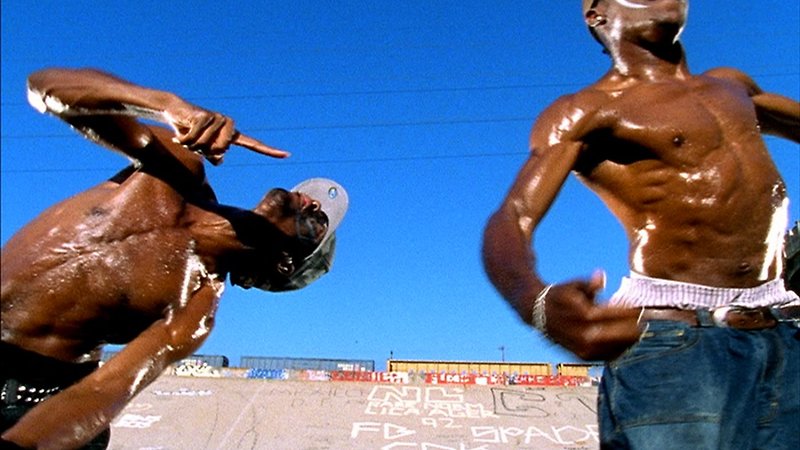The Official Festival Closer is a brilliant new documentary by David LaChapelle, which exuberantly demonstrates the rise of Krumping a startling new hip-hop dance subculture, which has grown beneath the mass-media’s radar.

“A euphoric, inspiring film about the roots of Krumping, an electrifying hip-hop dance craze from South Central.” — Tom Charity, Uncut
Screened as part of NZIFF 2005
Rize 2004
Those who think hip-hop culture and the music that feeds it have degenerated into a perpetual celebration of bling, playas and gun-wielding thugs have a surprise in store. Rize, a brilliant new documentary by David LaChapelle, exuberantly demonstrates the rise of Krumping a startling new hip-hop dance subculture, which has grown beneath the mass-media’s radar. “This is not a trend," warns Krumpmeister Dragon. It's simply too difficult.
"Extreme Documentary… enough to compel director David LaChapelle to issue a prefatory note that none of its footage has been ‘sped up or altered in any way.’ The movie's lightning-fast subjects are young residents of south central LA, whose seemingly endless history of gang violence has compelled them to form healthier rivalries around the practice of similar but distinct forms of high-energy hip-hop dance: clowning and krumping. Granted, I'm no dance critic, but the crazy-quick moves of Dragon, El Niño, Baby Tight Eyez, Tommy the Clown, and Miss Prissy – ‘ghetto ballet’ dancers whose cathartic kicks and jabs timed to hard, hard beats manage to clear space and draw crowds at once – look to me like the purest genius… To be blunt: Rize is the work of a rich, white fashion photographer turning his gaze on a poor, black subculture; it's also the most infectiously energetic and inspiring documentary in years. LaChapelle begins with footage of L.A. ablaze in 65 and 92, and ends, after several terribly sad turns, with a Maya Angelou poem. In between, the dancers pretty much direct themselves, their heads held high despite myriad pressures, their toes pointed up and out." — Rob Nelson, City Pages